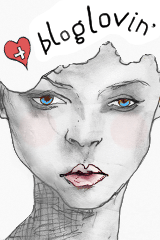For mother's day I decided to take my grandma to see The Great Gatsby. She was skeptical when I showed her the trailer, but went along with it any way. Well she loved it. It was glamorous, sexy, heartbreaking, and beautifully made.
This isn't a post about the movie though, its about the makeup in it. The Great Gatsby had many different representations of what we consider the makeup of that time. We have the soft and feminine Daisy, the bold and borderline trashy look of Myrtle, and then the very glamorous Jordan.
 |
| Left to right: Daisy, Myrtle, Jordan |
The movie inspired me to write about the rise of women wearing makeup on a daily basis and what that meant during this rapidly changing time period. So let us start with a little pre 1920s makeup history.
The beauty industry was changing in the early 1900s starting in 1907 with the first hair dyes. Then came the cosmetics that became more easily accessible like the invention of lipstick in a tube by Maurice Levy in 1915, and Maybelline's cake mascara from 1917. Before this makeup was a pain to put on and most likely was homemade with petroleum and soot. 1920 brought on the suntan after Coco Chanel accidentally helped popularize it by getting a sunburn while vacationing in the French Rivera. While all of this was happening makeup was still very controversial. The young women of the twenties who had grown up in this period and did not have the same views as their mothers embraced the new trend.
This trend was heavily influenced by French fashion which emphasized a boyish look with slim hips and small breasts. Prior to this the popular look in high society was the Gibson Girl with her tiny corseted waist and voluptuous curves. So obviously fashion took a 180. This was a time of women's suffrage in America, so the look represented more than beauty. It represented independence. Off came the corsets, up went the hemlines, and on went the makeup!
Makeup before this era was strictly for the theater and motion picture actresses. No respectable lady would ever wear it in public. The first to do so were actresses that wanted to break form the norm and Suffragettes who used red lipstick as a mark of independence for women. As I write this I decided to put on some red lipstick I had laying on my desk to keep me inspired!
 |
| Actress Clara Bow |
The typical makeup look of the 1920s included a smokey eye, a thin drawn on brow that was slightly extended downward. Rouge was applied to the cheeks in a berry or rose color and by 1925 orange became very popular. It was not blended up into the foundation like we do today, but left in a circle on the cheeks.The lips were always drawn on with a cupids bow and the bottom lip was exaggerated while the width of the mouth was decreased.
Now not all women wore their makeup to this extreme, though. Take the fictional Daisy Buchanan for example. Her makeup was soft but still had a youthful look. Makeup wasn't completely mainstream either. The look of the flapper was most widely worn by young women and was looked down upon by their elders. Ever heard the term "generation gap"? Well there was a big one between teenagers and young women of the 20s and their mothers. Makeup itself was still more accessible and easier to use than ever so even if women didn't go for the bold look they more than likely used it in some way.
I asked my grandma about her mother's makeup and fashion who grew up in the 1920s. My great grandma Marie was one of seven sisters from a poor farming family in southern Missouri. My grandma told me that her mother mostly talked about the dancing and doing the charleston, but she has pictures of Marie and her sisters in the shorter skirts that were the fashion and shorter hair. The family wouldn't have had much money for makeup so they just kept it simple with a bit of powder and some lipstick.
This shows that the new age of extravagance and image that was emerging even trickled down to the farmers of the midwest. It was a time when women could express themselves and just enjoy being young.

















